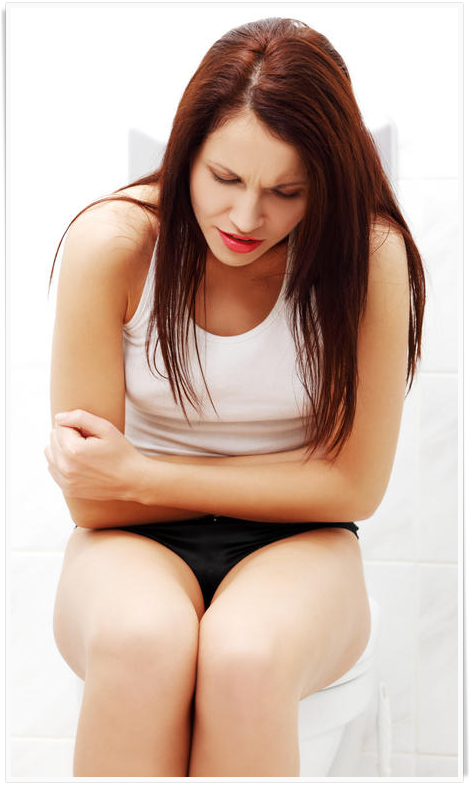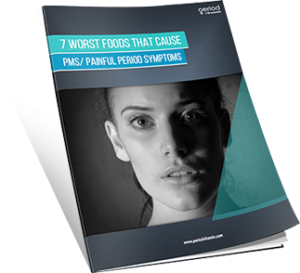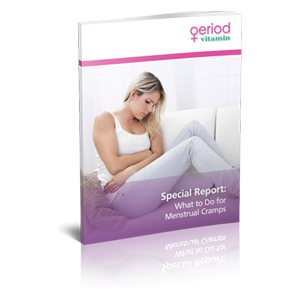 Post menstrual syndrome – disorder??? What is that? We are all very familiar with pms – premenstrual syndrome or disorder but very few of us are as familiar with PMS or a syndrome very much like pms that happens after a woman’s menstrual cycle is completed.
Post menstrual syndrome – disorder??? What is that? We are all very familiar with pms – premenstrual syndrome or disorder but very few of us are as familiar with PMS or a syndrome very much like pms that happens after a woman’s menstrual cycle is completed.
Just what exactly is PMS – what are its symptoms and how long does it last? What causes post menstrual syndrome? Is PMS treated in the same way as pms?
Most women do not get symptoms after their menstrual cycle is complete but a small percentage of women do. What they experience after their cycle is complete is very similar to what other women or the same woman might experience in the premenstrual stages of the cycle. These women will experience period pains after the period is complete. So what is the definition of PMS? For the purposes of clarity we will use the lower case pms for pre-menstrual syndrome and the upper case PMS for post menstrual syndrome.
Definition
The definition of Post Menstrual Syndrome is the presence of one or more hormone induced irregularities in the two weeks after a woman finishes her period. This is often call Post Menstrual Dysphoric Disorder. All of the maladies that can occur during the premenstrual stages and the period stage are also possible during PMS. The only difference it seems between pms and PMS is that post menstrual syndrome happens after the period, when menstruation is complete. It is estimated that about one third of all women suffer from post menstrual syndrome in their reproductive years and it slows down as she nears menopause.
Symptoms and Signs of Post Menstrual Syndrome – Disorder
The symptoms can occur anywhere from the day after the period bleeding stops until two weeks after that. Much like pre-menstrual syndrome, post menstrual syndrome produces these difficulties for the women who suffer from it:
- Severe cramps in the abdomen and reaching into the upper thighs as well as the pelvic area.
- Back pain
- Nausea and vomiting
- Weight gain and fluid retention
- Diarrhea or constipation
- Fainting or dizziness
- Headaches maybe even migraines
- Sore breasts
- Pain in the neck, shoulders, and upper back
- Loss of appetite or increased appetite
- Pain during intercourse
- Dramatic mood swings from happy to sad including depression, aggression, anxiety and panic attacks
If there is a difference between premenstrual syndrome and post menstrual syndrome it is the more intense emotional aspect of post menstrual syndrome. Of course we know that an overwhelming majority of women suffer some psychological symptoms during the pre and period stages of menstruation. These issues are more intense in women with post menstrual syndrome – disorder. What is not known is why post menstrual syndrome occurs and what its triggers are. It does seem clear though that it is the second half of the menstrual cycle that is the problem. Here less estrogen is produced but more progesterone is and this seems to be a major culprit in post menstrual syndrome.
It also seems apparent that other pre-existing illnesses, lifestyle issues or stresses in a woman’s life can be triggers as well. It is this hormonal imbalance that causes most of the problems women face with post menstrual syndrome, particularly in regard to fluid and water retention as well as the swelling this produces. There is something of a catch 22 here for some women though as stress, infection and insomnia can push the post menstrual buttons and actually be the trigger. Yet stress and insomnia can occur routinely during the menstrual cycle. Environmental factors such as pollution and toxicity can also be triggers.
Treatments, Remedies and Cures
There are as many treatments as there are issues within post menstrual syndrome – disorder. Not all of them will work and some of them require multiple treatments. Again these are the same remedies used during the menstrual cycle with the exception of the fact that since the symptoms might be more intense the remedies may have to be intensified as well.
Clinical Trials
There are currently clinical trial going on in Alabama and when published will be one of the first of its kind. At the moment a multi-disciplinary plan is recommended for treating post menstrual syndrome. These trials are centered on the causation and elimination of post menstrual syndrome pain in respect to vaginal, abdominal and back pain. New treatment methods are being tested with pharmaceutical and bio-tech companies. Results will be published in a few years. (Achieve Clinical Research).
Medicinal Remedies
- Prescription birth control and pain killers, anti-depressants and anti-anxiety medications.
- OTC pain medications or period medications such as Pamperin and Midol. There are also OTC analgesics that will assist will all the variety of pain sources during post menstrual syndrome – disorder.
- Since so much of the post menstrual syndrome is triggered by or triggers a psychological response, seeking treatment from a psychologist or psychiatrist might be helpful.
Diet and Healthy Lifestyles
- Limit caffeine, salt and nicotine from a few days before your period until two weeks after it.
- Healthy lifestyle options should be second nature and embossed in parental behavior.
- Women who exercise regularly will diminish the effects of pre and post menstrual syndrome – disorder. Stretching and exercise routines will reduce cramping and menstrual pain.
- Yoga can be extremely helpful on many fronts for treating PMS as it helps both the physical and mental symptoms with its stretching, positioning and meditation all at the same time.
- Massage can also help both physical and emotional symptoms. Massage is very relaxing for the body and can relieve cramping and back pain, but also relieve depression, anxiety and panic attacks.
- Hot baths help with cramping, back pain and relaxation.
- Sleep is essential to preventing the issues associated with post menstrual syndrome. 8 hours of sleep per night are critical when addressing anxiety, depression, panic attacks, cramps, nausea and extreme fatigue. Start out with enough sleep and try to keep it at that level.
Here are some foods that are recommended for both pre menstrual and post menstrual syndromes.
Whole grains: This would be all the brown grains and no white grains. These grains are glycemic index approved and won’t convert to sugar: brown rice, brown pasta, whole grain breads.
Legumes and beans: this includes soy and soy products as well. Lentils, black beans, chickpeas and also the seeds are in this grouping. These foods give the body a boost of phyto-estrogens that will balance the hormones which of course is the primary goal.
Vegetables: Cabbage, Brussels sprouts, broccoli and radicchio also increases the rate at which estrogen can be expelled from the body and the hormones balanced.
Fruits: They are all good but should be organic, no pesticides or fertilizers and eaten at room temperature not cold. Apples will eliminate bloat.
Omega three fatty acids and fatty oils: Fish, seeds, nuts, oils.
Omega six fatty acids: Omega six fatty acids as in sesame seeds will assist with all symptoms.
Avocados: contain serotonin and will help to cure the brain chemical changes that happen with Post Menstrual Syndrome. Also in this group are eggplant, pineapple, papayas, dates, plantains and plums.
Yogurt: will help with nausea and vomiting and indigestion.
Water: It is critical to drink a lot of water if you have Post Menstrual Syndrome – Disorder
Natural and Home Remedies: Vitamins, Minerals, Herbs and Supplements
Vitamins: B-Complex and Vitamin E help with tension, fatigue and bloat.
Minerals: Magnesium is important for dealing with tension, depression, anxiety and panic attacks. You can take magnesium in a supplemental capsule or tablet form, or you can make sure that you are getting enough in your daily diet. Most women opt for supplements because it is easier than trying to track the amount of magnesium in everything you eat. However there can be some side effects to magnesium like diarrhea or indigestion.
Calcium: Women with both pms and PMS seem to have a low level of calcium. You can get the calcium you need either from dairy foods or in a supplemental tablet. 300mg taken four times a day will help to contain almost all of the symptoms from pms and PMS.
Herbs
There are a myriad of herbal remedies for the different types of symptoms associated with post menopausal syndrome. In fact there are too many herbal remedies to list them all. Here are some of the most important ones:
Chaste tree berry: “A study published in the British Medical Journal involving 178 women with PMS found that chaste tree berry significantly reduced PMS symptoms over three menstrual cycles. Women taking chaste tree had significant improvements in irritability, depression, headaches, and breast tenderness. The most common side effects of chaste tree berry are nausea, headache, digestive disturbances, menstrual disorders, acne, itching, and skin rashes. Chaste tree berry should not be taken by pregnant or nursing women. The safety of chaste tree berry in children or people with kidney or liver disease has not been established. Theoretically, chaste tree berry may interact with hormones or drugs that affect the pituitary gland.”
Licorice: This is especially helpful for post menstrual syndrome because it increases progesterone and decreases estrogen. This will balance the hormones.



